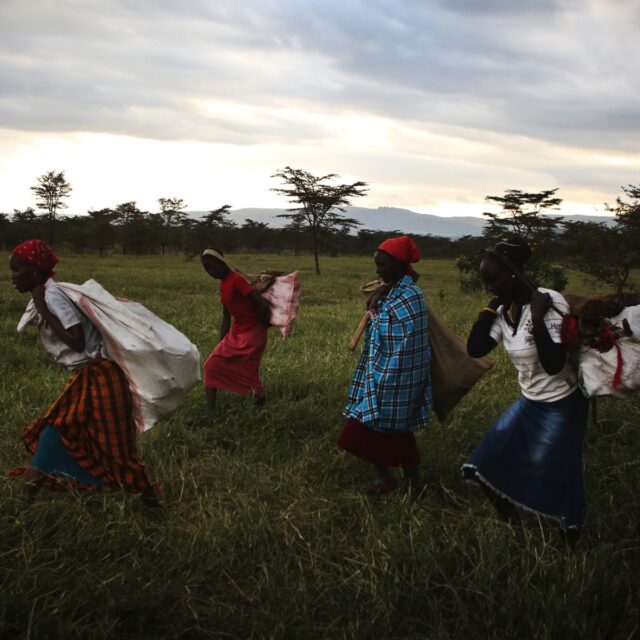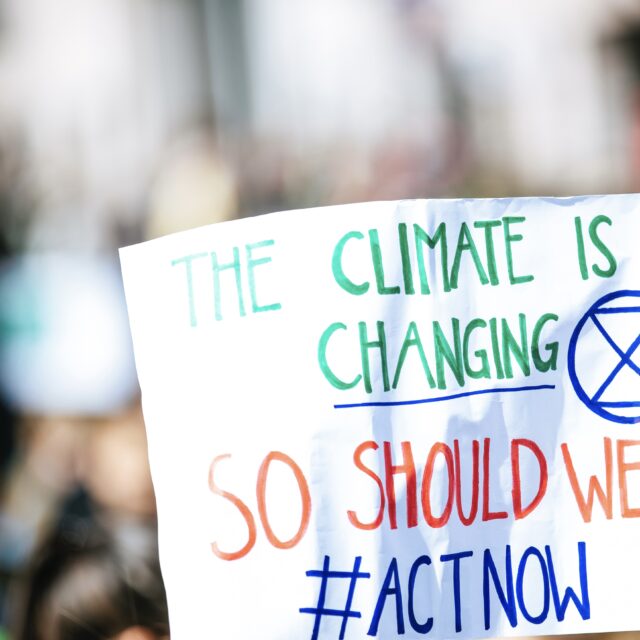This story was originally reported by by Isaiah Esipisu. Editing by Sebastien Malo and Laurie Goering for the Thomson Reuters Foundation.
When local authorities in eastern Kenya slapped a ban on trading charcoal earlier this year in an effort to save the region’s dwindling forests, charcoal producers worried their income would disappear.
“It was a chilling announcement,” said Peninah Kilungya, 42, a mother of five with the bright red traditional fabric of the Maasai people tied around her waist.
“We always turn to charcoal production so that we can feed our children,” she said.
Rain often fails in this semi-arid area, which makes farming risky. For some people, turning trees into charcoal is an option of last resort to make ends meet.
But Kilungya and others may now have found a way to hold on to their charcoal-making income while also protecting trees, building a more sustainable future for themselves.
They have turned to producing wood briquettes from tree branches, reducing the felling of trees while also making a product they hope could interest supermarkets and help lift hundreds of families out of poverty.
Producers of traditional charcoal can make about 1,800 shillings ($18) a week. A 90-kilogram bag of traditional charcoal chunks sells for just 450 shillings – and takes one or two trees to produce.
The new briquettes, however, use far less wood – and produce more income.
They crushed pebbles of charcoal made from tree branches into fine dust with a locally-crafted briquette-making machine, then mixed the powder with fine red soil and water.
The sky-blue machine then spat out elongated and chunky charcoal briquettes that look a bit like burned sausages.
More than 150 charcoal producers have adopted the technique in Kitui County alone. The briquette-making initiative is also ongoing in neighboring Tharaka Nithi and Embu counties.
Joseph Mwikya, the chairman of Mitamisyi’s charcoal producers association, said the charcoal used in the briquettes is made from sustainable wood – tree branches that grow back.
Branches can also be crushed easily, unlike tree trunks, and the briquettes made with the wood sell for more – a minimum of 100 shillings per kilogram, he said.
The regular shape of the product also allows them to be packaged in a way producers hope could appeal to big-city supermarkets.
“All we need is a way of producing them in larger quantities so that we can start marketing them,” said Jane Vengi, the chairwoman of the Kitui-based Mwaka Charcoal Producers Association, one of the country’s top charcoal producers.
Scaling up production would require cutting of more branches – but that would still be preferable to more trees being felled, promoters of the project said.
For now, the briquettes are being sold to local people, said Vengi.
“These briquettes are now our new source (for) cooking energy and, hopefully, it is likely going to be our new source of income in the near future,” she said.
No alternative
Forests cover about 7 percent of Kenya’s land area, down from 12 percent half a century ago.
When Kitui’s governor, Charity Ngilu, ordered a crackdown on charcoal production in January following a campaign promise to make natural resources better serve people, environmentalists welcomed the move.
But it also heightened tensions in a country where about two million people make a living producing charcoal, according to the World Agroforestry Centre.
Since the charcoal trade and tranport ban was put in place, normally quiet Kitui has seen an angry mob set charcoal-packed trucks on fire, the arrests of people illegally felling trees and the emergence of a song critical of the policy.
Kenya has previously tried to ban charcoal production, but failed. Because charcoal production and sales tend to occur in the informal economy, they can be hard to police, according to research by the Stockholm Environment Institute.
Instead, authorities are now trying to more closely regulate charcoal production and trade.
With so many people dependent on income from charcoal, doing away with the popular cooking material altogether is unlikely in the short term, said Shadrack Musyindu, a project officer for Caritas Kitui, a Catholic charity that has championed the briquette initiative.
Four in five urban Kenyans depend on charcoal to cook. The material remains the most affordable source of cooking energy especially for low-income communities.
Kenya has seen no shortage of initiatives to make smarter charcoal in recent years, using everything from human faeces to flour or sawdust combined with charcoal dust to produce briquettes.
Still, when burned in open fires and traditional stoves, wood, coal, charcoal and similar fuels emit harmful smoke that claims four million lives annually worldwide, according to the Global Alliance for Clean Cookstoves.
That makes household air pollution the fourth greatest health risk in the world, it said.
But John Kioli, executive director of the Green Africa Foundation, which helps communities manage their resources more sustainably, said moving on from charcoal as a fuel remains a difficult task.
“Many people in Kitui turn to charcoal production simply because they have no other alternative source of income given the tough climatic conditions,” he said.
ONE welcomes the contributions of guest bloggers but does not necessarily endorse the views, programs, or organisations highlighted.



